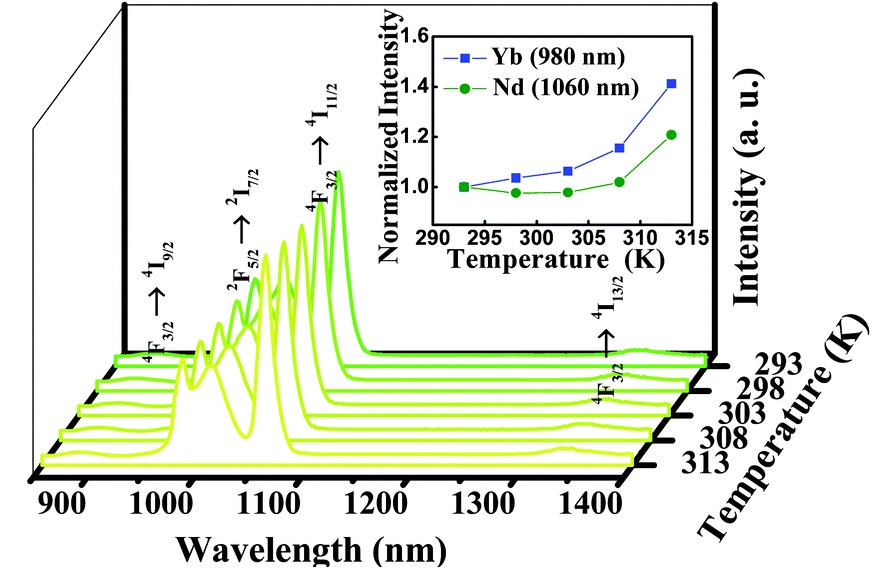Lanthanide metal–organic frameworks (Ln-MOFs) have recently received increased interest due to their interesting and useful luminescence characteristics, such as large Stokes shifts, long luminescence lifetime and a wide emission range – all the way from ultraviolet to near-infrared. Furthermore, the luminescence of these materials shows strong temperature dependence, which makes them excellent candidates for the development of luminescent thermometers.
Ln-MOF thermometers have recently been realised through the mixed lanthanide MOF approach, whereby two distinct lanthanide ions are incorporated into the MOF structure. There is an excellent linear correlation between the intensity ratio of the emissions from the two lanthanide ions and temperature. Such ratiometric luminescent thermometers have distinct advantages over conventional thermometers due to their fast response, high sensitivity and non-invasive operation.
Guodong Qian and team from Zhejiang University recently designed a novel mixed Ln-MOF thermometer with excellent sensitivity over the physiological temperature range (293-313K) by incorporating Ytterbium and Neodymium into the MOF. With excitation and luminescence in the near infrared window, this thermometer is harmless to biological tissues and its resolution is high enough to measure the temperature differences in pathological cells. These characteristics make this luminescent thermometer ideal for biological sensing.

Emission spectra of Nd0.577Yb0.423BDC-F4 in the range of 293–313 K excited at 808 nm; inset: temperature dependence of the normalized intensity of the corresponding transitions.
To find out how more about this thermometer, read the paper in ChemComm today!
A near infrared luminescent metal-organic framework for temperature sensing in the physiological range
Xiusheng Lian, Dian Zhao, Yuanjing Cui, Yu Yang and Guodong Qian
Chem. Commun., 2015, 51, Advanced Article
DOI: 10.1039/C5CC07532G










